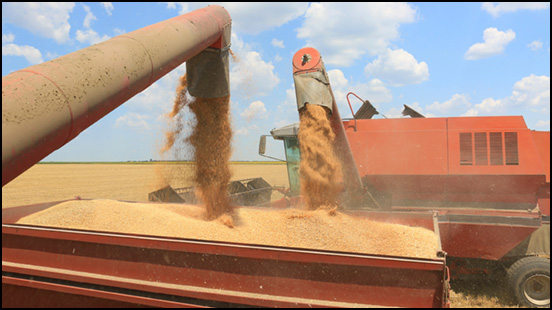
Protect Your Lungs
Protective gear helps prevent respiratory problems.
Without protective gear, working around grain dust can cause severe respiratory problems, says University of Missouri (MU) Extension safety and health specialist Karen Funkenbusch.
Conditions such as farmer’s lung are serious but preventable, she says.
The need to protect against grain dust increases when farmers combine, load, unload and dry grain. The dust contains plant materials, mold spores, insect parts and excretions, bacteria, and soil.
Exposure to the dust causes wheezing, sore throats, eye and nose irritation, and congestion.
Repeated exposure leads to farmer’s lung. Its symptoms are chills, fever, cough, shortness of breath, tightness in the chest and tiredness. Typical symptoms may last 12 hours to 10 days.
Repeated exposure also may result in reduced appetite and weight loss. Lung scarring occurs in the later stages of the disease.
Farmworkers should always wear a dust mask or respirator when working around grain, Funkenbusch says. Respirators come in a variety of types, sizes and costs at farm-supply stores, chemical suppliers, hardware stores or safety equipment companies. Choose one that fits securely around the mouth and nose.
“Try before you buy,” Funkenbusch says, to make sure there is a good seal around the face.
Encourage farmworkers to wear protective gear.
“It protects their health and wealth by preventing injury, illness and unnecessary medical bills,” she says. “Make it a habit to grab it before working near grain. Respirators can prevent many respiratory ailments associated with farming — but only if you wear one.”
She offers tips for choosing a respirator.
- Have a trained person perform the fit test.
- Conversely, test it yourself by putting on the respirator and placing your palm over the exhale port. During exhalation, the respirator should push out slightly from your face. Next, cover the inhale ports, or filters, inhale and hold for 10 seconds. The respirator should suck back onto your face and maintain good suction for the entire 10 seconds. Adjust the straps and reposition the respirator if there is not a good seal.
- If you smell or taste a contaminant or become dizzy while wearing a respirator, get out of the area and into fresh air immediately.
- Glasses, gum, chewing tobacco and facial hair interfere with proper sealing. Wear respirators on clean-shaven faces. Use adapters if you wear glasses. Avoid contact lenses because contaminants can stick to them and cause eye damage.
Periodically check your respirator for damage and dirt. Do not try to repair or substitute non-manufacturer parts. Clean it often in warm, soapy water. Dry and store in a sealed plastic bag.
For more information, the MU Extension guide “How to Protect Yourself From Respiratory Hazards” (G1935) is available at http://extension.missouri.edu/p/G1935.

Editor’s Note: Linda Geist is a writer for University of Missouri Extension.






